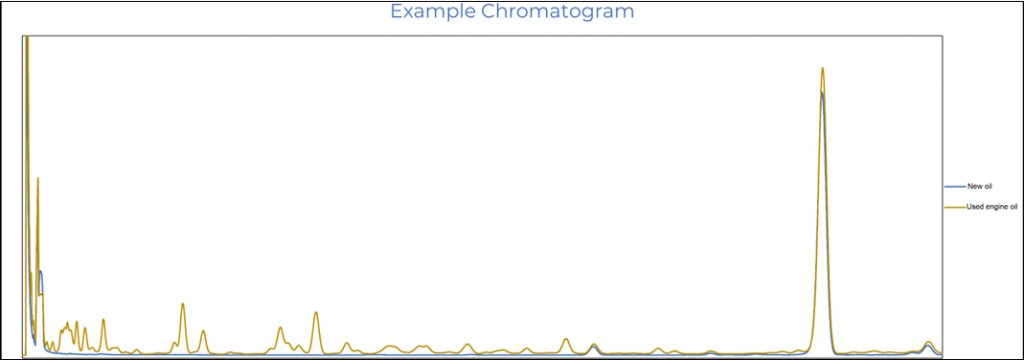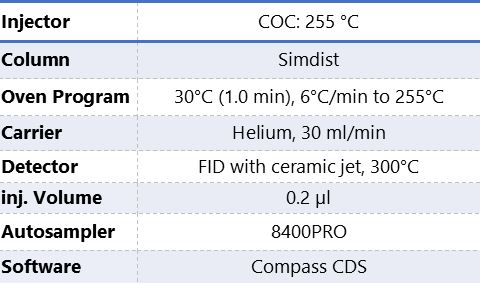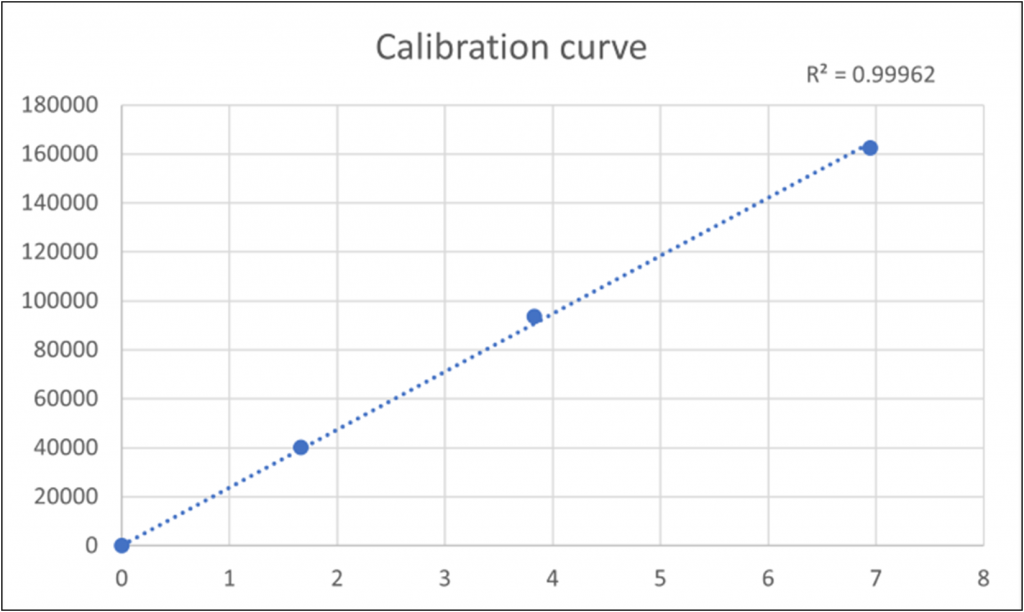ASTM D3525; Standard Test Method for Gasoline Diluent in Used Gasoline Engine Oils by Gas Chromatography
Introduction
The ASTM D3525 describes a method to determine the amount of gasoline in lubricating oils using a gas chromatograph (GC) in combination with an flame ionization detector (FID).
While using the engine some fuel dilution of lubricating oils takes place during normal operation, this may be the result of engine wear or improper engine performance. Fuel dilution is caused by unburned fuel components entering the engine crankcase causing the dilution of the oil. When excessive fuel dilution occurs the lubricating oil performance will be degraded. The oil products viscosity will decrease and this causes performance problems in the engine. The oil contamination safe limits are usually kept at 4 to 5 %.
This application is applicable on the SCION Instruments 4X6 and the new 8X00 GC-platform, Figure 1 shows the new SCION Instruments 8X00 GC platform.
Figure 1. SCION Instruments 8500 GC platform equipped with the 8400PRO autosampler.
Experimental
This analysis can be implemented on both the 8300-GC and the 8500-GC platform. This experiment was performed on a SCION Instruments 8500-GC analyser equipped with a FID detector using a narrow bore ceramic jet, SSL and a 100 positions 8400PRO autosampler.
Gasoline contamination in oil has a safe limit of 4 to 5 mass%. Excessive amount of gasoline will dilute the oil and decreases it’s viscosity, the change in viscosity can cause performance problems in the engine, that is why it is important to monitor these levels and periodically change engine oil.
The ASTM D3525 is a perfect and simple method for the determination of gasoline in lubricating oil. This test method is limited to the equipment mentioned in the ASTM norm. The amount of sample plus internal standard has to be within the linear range of the FID used.
To all of the samples and standards n-Tetradecane (C14) will be added as internal standard.
F = Fuel dilution, mass %
A1= Area counts before the n-Tetradecane peak
A2= Area count of the n-Tetradecane peak
W1= Mass of n-tetradecane (grams)
X1= Mass of sample
Figure 2. Example chromatogram of new motor oil vs. used.
Table 1. Analytical conditions
Results
All the results were calculated according to the described method in ASTM D3525.
A calibration curve prepared showed a correlation (R2) greater than 0.9996, which is an excellent result.
Figure 3. Calibration curve of lubricating oil containing gasoline.
The repeatability RSD% of the method was determined with eight consecutive injections with lubricating oil containing 3.5 mass% of gasoline. The analysis showed a repeatability of 3.2%.
Two unknown oil samples were collected from a local garage and measured. The first sample had a gasoline concentration of 2.53 mass% and the second one 2.55 mass%. This shows that the local garage changed the engine oil in time to guarantee the engine performance.
Figure 2 shows a chromatogram that has 0 mass% gasoline in comparison with a sample containing 2.53 mass% of gasoline.
Conclusion
The Scion 8X00-GC analyser equipped with a split/spitless injector, Scion Instruments column and FID is capable of performing ASTM D3525 in a way that complies to the method.
The equipment of the 8X00-GC analyser is pre determined, for ordering information or customisation, please contact your local sales representative.
Although the 4X6-GC series is not used in this application it is possible to perform this analysis on the SCION Instruments 4X6 GC series.
Download Application Note
Download complete Application Note here: Standard test method for gasoline diluent in used gasoline engine oils by gas chromatography
Keep in Touch
If you wish to keep up to date with SCION Instruments latest research and articles, why not join us on social media and sign up to our newsletters today?





